As a sewer beginner you might be wondering what tools you need to have in your beginners sewing kit, before you buy lots of tools for sewing, today I’m going to share my list of the 17 Essential Sewing Tools For Beginners.
The first thing to do is to take a moment to think about what type of sewing projects you want to work on, not all the sewing projects are the same and each one might require different tools to work with.
But as you are beginning to sew, you might want to try different sewing projects before you find the ones you feel more comfortable working with and than you’ll know what are the essential sewing supplies for that type of sewing.
As a sewer beginner your kit must have some tools that are essential for any sewing project.
At the beginning of my sewing adventures I had a small basket where I used to keep some sewing tools, sometimes I used to use them and sometimes I didn’t, today when I’m working on any new sewing project you can find me using most of these tools, the reason is simple, it might seem using the tools will require to work more and it will take more time, but as you use the tools you can save time and the results will be better at the end.
I strongly recommend to you to use different sewing tools you’ll need for each one of your sewing projects.
Here are the 17 Essential Sewing Tools For Beginners
*You can find Affiliate Links on this post, you can read the full disclosure here
Hand Sewing
1. Hand Sewing Needles
Just to think about all the time that it will take to baste a new sewing project may make you to think if it worth the work or not, but I can tell you, the time you invest basting any sewing project before you run your sewing machine it’s worth it!
When sewing you want to make everything to look perfect and like if you bought it and you didn’t make it, taking the time to baste by hand will help you to work better with the sewing machine and everything will come up perfect.
Hand needles come in various types, sizes, and lengths to help you to work better on different types of fabric or sewing projects. One good option is to buy a needle package where you can get a few different types of needles.
2. Needle Threader
Threading a needle can be some times a challenge and it will take some time to get it right, save tons of times and thread your needle at the first try with a needle threader.
It will help you to save lots of time and you can keep working on your project with ease.
3. Beeswax
When you want to do some sewing, it doesn’t matter if you’ll be making basting stitches, cross stitches, some embroidery or quilting, you don’t want your thread get tangled in every stitch you do, the best way to help you to work better while working on sewing, embroidery or quilting is to use beeswax.
Get one of the best quality beeswax for sewing and you can work with no worries about your thread getting you in problems on every stitch you do!
Marking
4. Tracing Paper
When working on a sewing project to make a garment, you might need to use a tracing paper that will help you to work with ease with the tracing wheel, the quality of Clover tracing paper is good and it comes in different colors so you can work on different color fabrics.
5. Tracing Wheel
The tracing wheel will help you to transfer markings from sewing patterns onto fabrics with or without the use of tracing paper. Having a tracing wheel by your side your sewing can be more accurate, this sewing tool can help you to transfer any pattern onto the fabric but also it will help you to make any mark on the fabric where you need to pay attention or where you need to make a buttonhole or other mark where you need to sew a ribbon or anything else, and it will help you to make copies of the patterns onto another tracing paper, so you can save the original pattern.
6. Tailor’s Chalk,
You’ll find many different tools to make marks onto fabrics for any sewing project, but the advantage of using a tailor’s chalk to make any mark on any type of fabric is huge, as it was made to help tailors and anyone who loves to sew to make any mark onto the fabric without making any damage on it. As you work on the cutting and sewing the marks will disappear and will leave no marks on the fabric.
You can find the Tailor’s Chalk on different colors to help you to work with ease on different color fabrics, one good idea when you’re a beginner is to get one in white and one in a different color, this way you can work on white, black or different color fabrics.
Measuring
7. Tape Measure
A tape measure is a ribbon of cloth or plastic with linear-measurements (could be inches or cm) this is the most used tool in your sewing kit basket.
As this is a flexible measure tape, it will help you to take any measurement around the body and many other items.
8. Seam Gauge
The seam gauge is a fantastic sewing tool that will help you to do better in many different tasks to do while sewing, it will help you to make the perfect hem allowances, but also it will help you to do button placement, button sizes, tucks and pleats, you can use it also as a point turner and also to draw a circle.
As you get used to use the seam gauge you’ll love it more and more!
9. Small Patchwork Ruler
Having a Quilting ruler in your sewing kit basket or beside it, will help you to trace perfect lines and make straight cuts on any fabric.
This may look like a tool that doesn’t belong in a traditional sewing basket, but more and more people who love to sew are adopting it as a regular tool.
Most of the quilting rulers are in inches and people who work with cm will need to adapt to work with inches but after a while it’s easy to work with them. As you start to work with it I’m sure you’ll love it and you’ll be looking for other different quilting rulers to improve your tracing and cutting skills while sewing.
Pinning
10. Straight Pins
You’ll be using the dressmaker straight sewing pins to hold patterns to fabric for cutting or to hold pieces of fabric together for sewing and many other tasks you’ll be working on while sewing.
The dressmaker pins should be heat-resistant glass head as you’ll be pressing several times while making a garmet with a warm or hot iron. Pins should be also stainless steel construction to prevent any oxide mark left on the fabric.
If pins come in a plastic box this will help you to keep them in one place, if not than you need to get a pincushion to have them in one place and it will help you to get them all from your working table to your sewing machine.
11. Pin Cushion
If you love to sew you might have seen the traditional tomato shape pin cushion most of the dressmakers and sewing lovers have in their sewing kit basket, and it’s because it is the best way to keep in one place all your pins and also your needles and in many times some safety pins.
When buying the Dritz Pin Cushion tomato shape you’re not only keeping all the pins in one place but you help yourself to keep the pins clean and sharp
You can make your own Pincushion, read the tutorial here!
Pressing
12. Seam Roll
This sewing tool is ideal for pressing long and narrow areas such as sleeves, long seams, pants legs and many more small areas that need to be pressed.
13. Tailor’s Ham
“A tailor’s ham or dressmaker’s ham is a tightly stuffed pillow used as a curved mold when pressing curved areas” Wikipedia.com
It will help you to press and molding darts, sleeves caps and curved seams, to get better results you’ll be pressing as you go sewing, it will be helpful to have the Tailor’s Ham near your ironing board.
Cutting
14. Scissors
Having a good pair of scissors in your sewing kit will be essential to anyone who is interested in sewing, it will help you to work with ease while cutting different types of fabric.
The difference between a pair of scissor and a shear is that scissors have symmetrical sized fingers holes and generally under 6″ in blade length, while shears have one hole bigger than the other for better grabbing on the shears while cutting, and the length of the blades is bigger than 6″
15. Rotary Cutter
Why to have a rotary cutter in your sewing kit basket, you may ask? Well, since the first time a rotary cutter made its way to help many quilters to cut any amount of small pieces of fabric with less work and with a cut almost perfect 100 % of the times, this sewing tool has also helped to quilters and sewers to make the perfect cut in many different types of fabric with ease.
If you want to make straight cuts in fabric with ease, you need to add this tool to your sewing kit basket.
16. Cutting Mat
Everyday you’ll be seeing more and more people who love to sew and who love to work on textile art have on their work table a cutting mat, it has turned into an essential tool for quilters but it has been helping to many to make the perfect cut in any type of cloth without damaging the work table surface.
The cutting mat will help you to work with ease while cutting almost any type of fabric on it and keeping the surface of your work table in good conditions.
You can find the cutting mat in many different size, from the smallest to take it to your sewing classes with your other sewing tools to the biggest cutting mat to have it on your work table.
Ripping
17. Seam Ripper
The seam ripper is a small tool that is used to remove and cut stitches, as a sewer you might make some stitches in a wrong place, the best and fast way to remove it without damaging the fabric is using this small sewing tool.
Why To Have A Sewing Kit ?
At the time of working on any sewing project, you’ll be using different sewing tools to make the process of sewing easier and better.
Every tool in your sewing kit has a function to do, no matter how small or simple your new project is, you’ll be using more than one of the sewing tools.
It’s always better to think ahead and get them all or at least most of them as you begin to work on your new hobby, soon you’ll see the advantages of working with the right tool, no more headaches and the stitches will be always well-made and your creations will meet the excellency you want to reach.
Where To Keep All Your Sewing Tools?
As a tradition many sewers love to have a basket or a box where to keep them all, there’s no rule about it, any box any basket will be good, even the traditional cookies tin will do the job.
But if you want to get more professional there’s always a good box where you can keep all the sewing tools in one place.
How To Keep The Sewing Tools In Good Conditions?
Sewing tools are diverse and the steps to keep them in good conditions will be different from one to the others, I will suggest keeping a piece of all flannel in your box and wipe the tools after you use them.
Take your precautions when wiping the scissors and the Rotary cutter, the blades of both are sharp and they can easy hurt your fingers and hands. Always Keep the rotary cutter blade close and out of reach from children and pets.
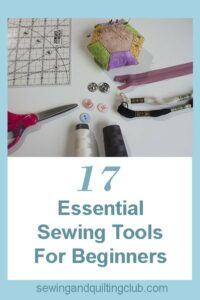 How Many Sewing Tools I Will Need?
How Many Sewing Tools I Will Need?
Sewing as many hobbies can be diverse, this sewing kit I list above is for beginners, these tools will help you to start with the right foot with your new hobby.
As you keep working to learn more about sewing, you’ll know what other tools you’ll need.
Sewing tools are not all the same for every sewer, if you want to focus on making home decorations items, you’ll need a list of tools, but if you want to try quilting, than the list of tools will be different.
My advice will be to start with this list and as you work on your new hobby make a list of the new tools you’ll be needing to work better on your sewing projects.
Closing
Sewing tools will help you to work better on any sewing project you make and they will also help you to enjoy every moment of it!
If you use another sewing tool that you know it will help others, please share the tool’s name in a comment!
Enjoyed this post? Give my Pin a share!


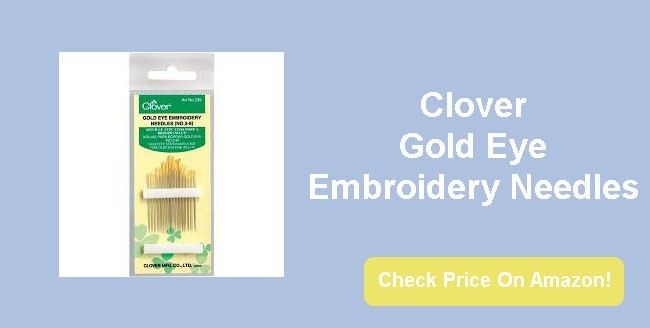
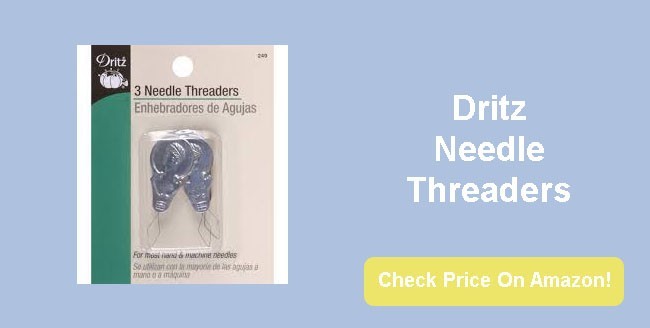
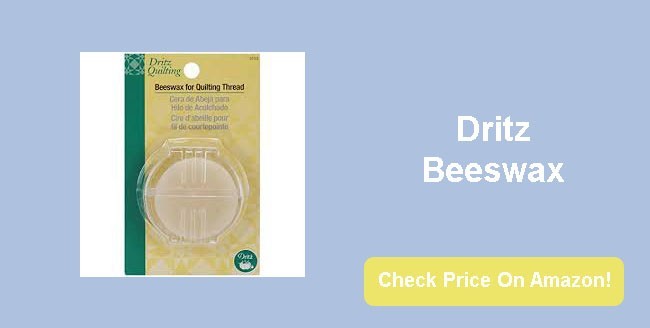
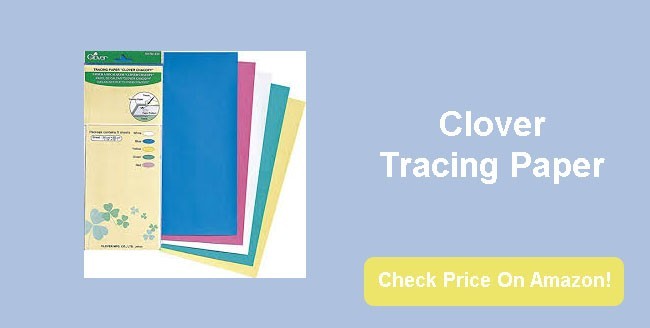
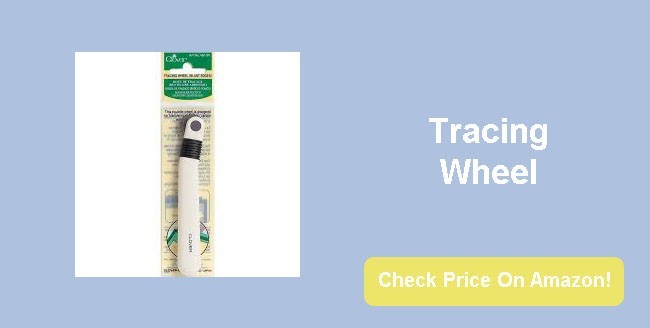

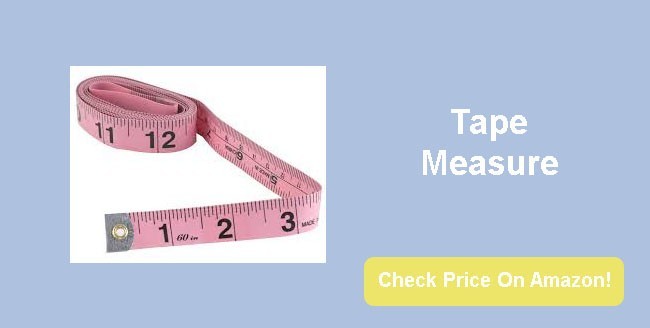

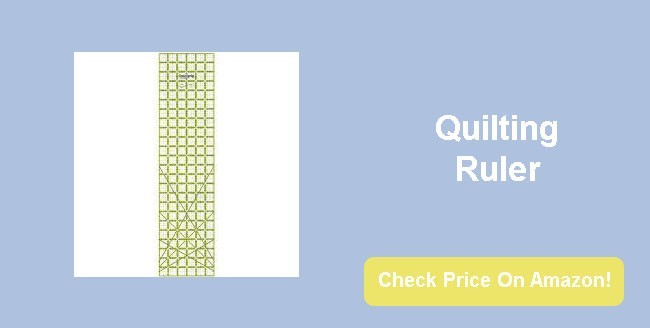
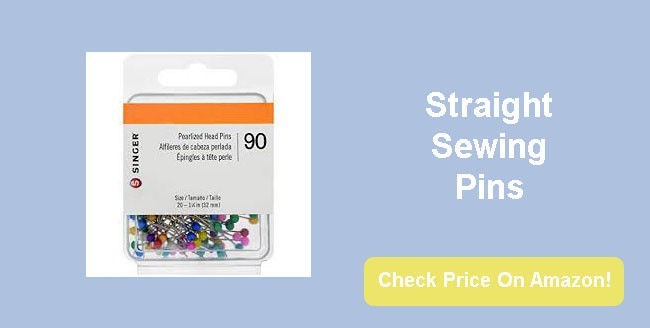
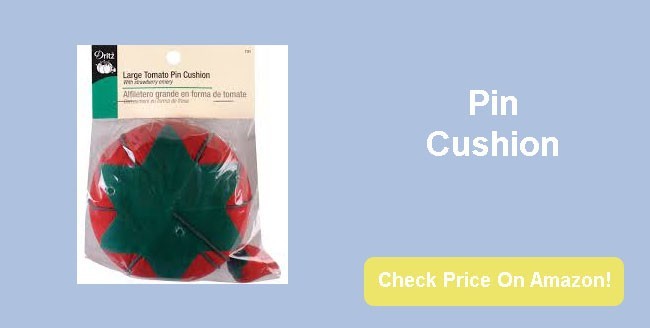


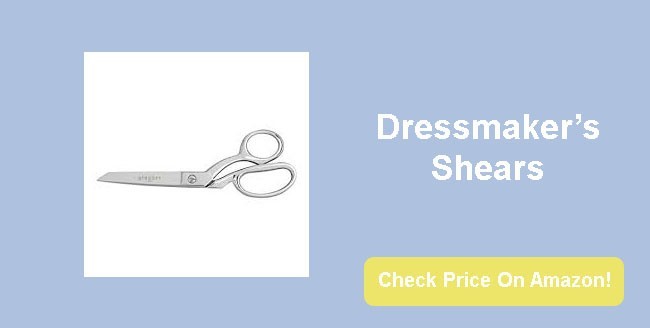
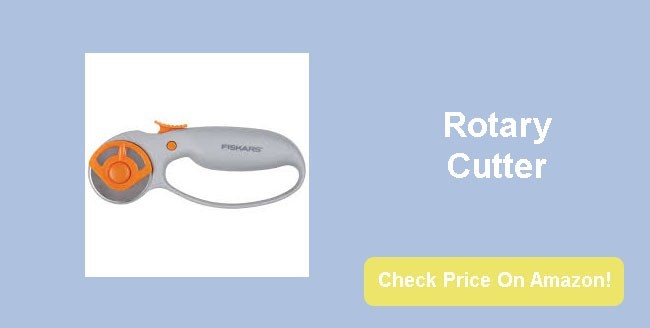
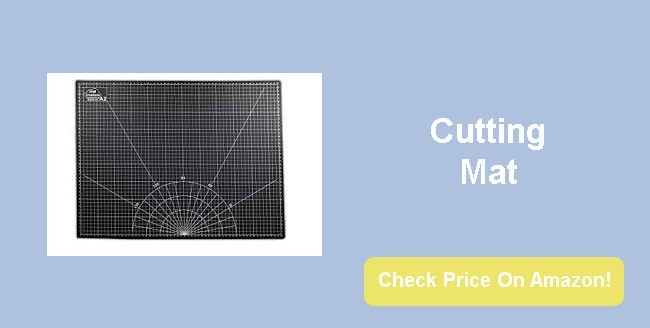
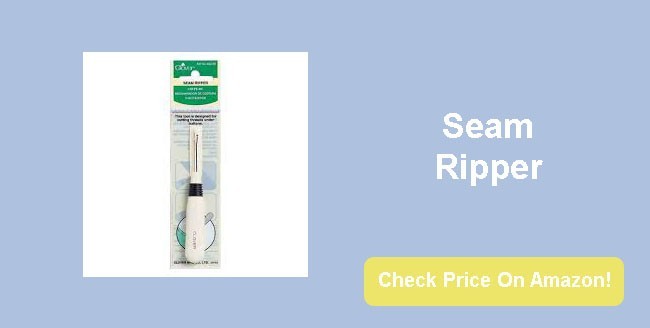
Excellent article on 17 Essential Sewing Tools, your greatly on point, I could remember that very year I told my wife to learn sewing and she did,came back with long list of what you have just stated in this post,it really helped her to start practicing at home and increases the learning rate and skills,in the first month of the training she cached up very quick due to the tools available,thank you for sharing this wonderful write-up to help every beginner.
Hi, Alex B
I am a cross stitches enthusiast. When I am not busy at work, I also do some sewing myself, but you know, it is too tired. In the city where I live, these Sewing Tools are really hard to buy in the store, so I bought it online. Finally, thank you for spending so much time sharing 17 Essential Sewing Tools for everyone.
I was a little surprised by some of the items in this basket – being that it was for a beginner’s basket. I wasn’t even familiar with some of them until I read your article. I think the most important is probably a good pair of scissors. They need to be sharp and made for cutting fabric. You can’t just use any old pair of scissors you found in a drawer!
Hi,
Yes, having a good pair of scissors will help you to work better on any sewing project!
Plenty of helpful information on tools for sewing. I used to sew years ago and loved it. Some of the tools you are offering I have never used, like the beeswax. But, it makes since. It is essential to have some of these tools to make your work less frustrating and your finished product more professional looking. thanks, Deanna
The most important tool inside my sewing box is the scissors. This is particularly so because I am left-handed and using regular scissors is a disaster. No matter how hard I try, there are times I would deviate from the lines and get the edges jagged badly. When my teacher introduced me to left-handed scissors, it was such a huge relief! I couldn’t be happier.
Hi Cathy,
Any teacher should never forget to pay attention to the best tools for left-handed and for sewing should be also important, I’ll take a note and I’ll let you know what scissors are the best for left-handed sewers.
With so many sewing supplies in the market, it can be overwhelming for a beginner, While some sewing tools are essential, others are fun, optional materials you can acquired later and this post will help to navigate the world of sewing tools and understand what these items do, it’s important checking this beginner’s guide before heading to a local craft store.
Hey Seun Jeremiah,
So true, it’s always better to check up on a sewing tools list before to get everything you can find at the local craft store!